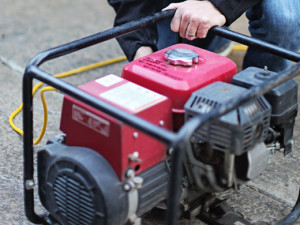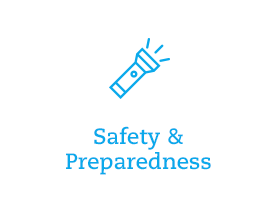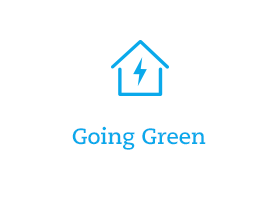Generator Safety
Generators can keep critical parts of your home going during a power outage, but be careful not to let deadly carbon monoxide creep in. The last thing you want during a power outage is to let a silent killer into your home.
A portable generator can be helpful during storm season, especially in rural areas where power outages can last longer. But, take care where you place yours. The exhaust from a generator, like from any combustion engine, is dangerous. A small generator puts out a hundred times more carbon monoxide than car exhaust, because it lacks emission controls for filtering exhaust fumes.
Never place a generator in a garage, carport or enclosed area where fumes will build up. Before starting it, situate the generator in a safe area outdoors, far away from doors and windows, with three or four feet of clearance on all sides for ventilation and cooling.
Put the generator in a dry location that’s as far from your home as possible. If needed, you can use a portable canopy to shield it from rain. However, always point the exhaust away from your home. Even then, wind can blow the fumes toward the house and into your home, where it builds up.
Carbon monoxide can also build up in a garage or any enclosed area and it might not have a noticeable smell. Breathing it can make your family experience flu-like symptoms — weakness, headaches, upset stomach, vomiting, dizziness, chest pain and confusion. When people breathe too much exhaust in, they pass out and can die if they don’t get fresh air immediately.
A battery-powered carbon monoxide alarm can alert family members if the gas is building up indoors before it’s too late. Someone asleep won’t feel the typical symptoms and may die unless awakened. When anyone shows these symptoms, or the alarm goes off, get outside right away. Then air out your house by opening all the doors and windows to let the poisonous gas escape before going back in.
Generating only about 2,000 to 7,000 watts, portable generators can’t power your entire home. Plugging the generator into an electrical outlet inside your home, or running it through the electrical panel without a professionally installed cut-off switch is extremely dangerous and will put utility crews in life-threatening danger. Instead, plug an extension cord directly from the generator into an appliance. Use a heavy-duty extension cord rated for the size of your generator to “rotate the power to appliances on an as needed basis — run the refrigerator for a while, then the freezer, to keep the food inside cold and safe until power is back on.
During an outage, note these other generator safety issues, too:
- Never refuel a running generator. Any spills may ignite a fire.
- Reduce the chance of tripping accidents by placing the extension cord out of the way, so no one will stumble over it.
- Only use an outside extension cord with amperage rated for your appliances. A tag on the cord shows its rating. Never exceed the noted amperage of the cord when powering your appliances.
- Check your cord for cracks and breaks and replace it if you find any. Never use a patched cord or an indoor cord that’s too small for the generator’s output.
Owning a portable generator is only part of an emergency outage kit. In addition, make sure to have extra food and water, flashlights and batteries, extra medications and any other supplies your family will need to get by until power is restored. A full list of recommended emergency kit items can be found on the Red Cross website.









